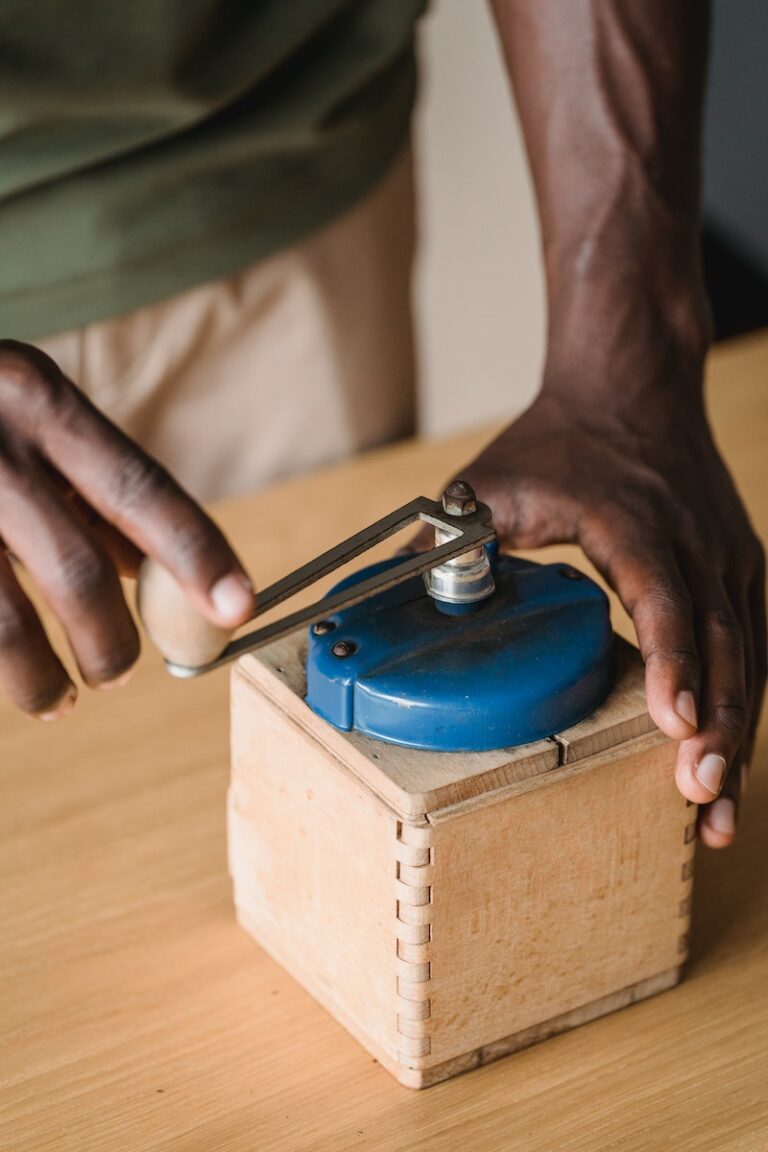Do you love the taste of freshly ground coffee beans but are tired of relying on electric grinders? Perhaps it’s time to consider a manual coffee grinder. Not only do they provide an authentic, hands-on brewing experience, but they also allow for greater control over the grind consistency and result in a richer and more flavorful cup of coffee.
In this blog post, we’ll explore the many benefits of using a manual coffee grinder and why it may be worth adding one to your home brewing setup. So grab your favorite mug, sit back, and let’s delve into the world of manual grinding.
What is a Manual Coffee Grinder?
Manual coffee grinders are among the most popular coffee brewing devices on the market. They’re easy to use and provide a high-quality grind of your beans. They work great for those who want to make their own coffee at home or for those who just prefer a finer grind, especially when making espresso. Check out our list of the best manual coffee grinders available on the market today.
Types of Manual Coffee Grinders
There are a few different types of manual coffee grinders available on the market these days, so it can be hard to decide which one is best for you. Here are the most common types:
Conical Burr Grinders
These grinders use a conical burr to chop your coffee beans. They usually come with a tamper to help press down the beans and keep them from sticking to the grinder. This type of grinder is good for people who want precise control over how finely their coffee is ground.
Spindle Burr Grinders
Instead of using a conical Burr, spindle Burr grinders use rotating disks to chop your coffee. This type of grinder is good for people who want more even grounds than with a conical Burr, but don’t need as much control over the ground texture. They also tend to be less expensive than conical Burr grinders.
Spring-Loaded Coffee Grinders
These grinder use springs instead of disk or gears to chop your beans. They’re generally easier to use than other types of grinders, but they don’t offer as much control over the ground texture. They’re also less expensive than other types of grinders.
Benefits of using a Manual Coffee Grinder
Manual coffee grinders offer a variety of benefits over electric coffee grinders. They’re more efficient and can yield better-quality coffee because they use more precise cuts. Manual grinders are also less likely to produce clumps or lumps in the beans, which can affect the flavor and quality of your coffee. Additionally, manual grinders typically cost less than electric models. However, if you’re looking for an even finer grind, an electric grinder may be better suited for you.
Disadvantages of using a Manual Coffee Grinder
A manual coffee grinder is definitely a less-expensive way to get your daily dose of caffeine. However, there are several disadvantages to using this type of grinder. First and foremost, manual grinders aren’t very efficient.
This means that you will likely end up with more grounds than necessary in your coffee, which can lead to poorer flavor and an unpleasant cup of brew. Additionally, manual grinders can be difficult to use and require a fair degree of finesse in order to produce consistent results.
If you’re not used to grinding coffee by hand, it might not be the best option for you. Finally, manual grinders can be loud and clumsy, making them problematic if you want to use them in a quiet setting.
How to Choose the Right Manual Coffee Grinder
Choosing a manual coffee grinder can be daunting, but there are a few key things to consider. Here are four tips to help you choose the best one for your needs:
Size matters: Before buying a coffee grinder, make sure you have enough counter space to accommodate it. Most manual grinders range from about 11 ounces to about 30 ounces, so factor that into your decision.
Price tag isn’t everything: Don’t let the price of a grinder determine whether or not you buy it. Factors such as how durable the machine is and how much sediment it produces are important factors to consider. In some cases, less expensive machines may still produce great-tasting coffee.
Grind size matters, too: Not all coffee beans require the same grind size, so be sure to take that into account when choosing a grinder. Generally speaking, coarser grounds will be used for french press coffee while finer grounds will be used for espresso-type drinks. Some machines even come with multiple grinding dices so you can tailor your brew exactly how you like it.
Comparison with Electric Coffee Grinders
Are you tired of spending your mornings grinding beans for your coffee? Manual coffee grinders offer a more hands-on approach to brewing your favorite beverage. What are the benefits of using a manual grinder?
Here is a list:
A manual grinder provides a more personal and customizable brewing experience. You can adjust the coarseness of the ground coffee to create the perfect consistency for your drink.
Manual grinders are cheaper than electric models.
Manual grinders require less maintenance than electric models. They do not require filters, so they keep your coffee tasting fresh.
Some manual grinders come with built-in scales to measure how much grounds you need for each cup of coffee. This is helpful if you’re trying to reduce environmental waste by only grinding what you plan on using.
Tips for Using a Manual Coffee Grinder
If you’re looking for a more intimate, manual coffee grinding experience, look no further than a coffee grinder. While automatic grinders do an admirable job of pulverizing your beans into grounds, there’s something about the hands-onwork that can’t be beat. Here are four tips to get the most from your home manual grinder:
Choose the Right Grinder size
First and foremost, make sure you have the right grinder size for your beans – small or large. Many people mistakenly buy a small grinder because they think it will produce finer grounds, when in fact a larger grinder is better suited for more robust beans. This isn’t to say that smaller mills aren’t worth considering – they often come with features like portability and compactness that make them great choices for tighter spaces – but if you plan on regularly using your machine, go with a larger model.
Grind on Equal Lengths
It’s important to evenly grind your beans before putting them into the machine – otherwise you’ll end up with lumps and inconsistencies in your coffee. When in doubt, start with shorter lengths and work your way up as needed.
Use Fresh Beans
Beans roasted more than two days prior will not produce quality coffee grounds due to chemical changes that occur during roasting . So try to use freshly ground beans whenever possible – even if you have to go out and do some extra shopping in order to get them.
Experiment
There’s no one perfect way to grind your coffee – experiment with different settings and see what produces the results you’re looking for. With a manual grinder, there’s plenty of room to play around so you can find the perfect setting for your particular beans.
Conclusion
If you’re looking for a great way to improve the quality of your morning cup of joe, consider investing in a manual coffee grinder. Not only will you get the freshest beans possible, but you’ll also be able to control the fineness and flavor of your coffee. With this type of grinder, it’s easy to tailor your drink to your preferences – meaning no more bitter or over-extracting coffee. Whether you’re brewing solo or brewing for a group, a manual coffee grinder is an essential addition to any kitchen.




4 Comments